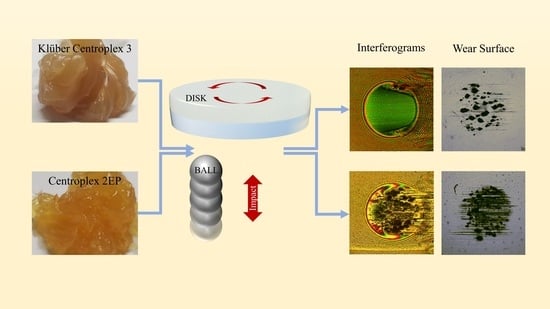Occurrence of Grease Lubricated Impact-Sliding Composite Wear
Abstract
1. Introduction
2. Experimental Equipment and Conditions
2.1. Experimental Equipment and Principle
2.2. Experimental Materials and Parameters
3. Results and Discussion
3.1. Centoplex 3 Grease
3.2. Centoplex 2EP Grease
3.3. Surface Damage of Steel Ball
3.4. Central and Minimum Film Thicknesses
4. Conclusions
- The sliding speed affects the position of the wear. When the sliding speed of the glass disk is low, due to the thin film thickness formed, multiple direct contacts of asperity peaks occur simultaneously in the contact area, and gradually expand into pieces, resulting in adhesive wear. With a higher sliding speed, wear occurs first at the side lobes of the horseshoe shape and causes surface scratches in the subsequent movements. Both types of wear occur when the sliding speed is modest.
- During the impact process, due to the nature of the sliding speed, the wear not only occurs during the linear loading process, but also continues to occur during the linear load reduction process. The lower the consistency of the grease, the more severe the wear. When the maximum value of the load increases, the impact time is prolonged, and the degree of wear is more severe.
- The current experiments show that the superiority of grease lubrication—shown under the pure rolling condition at a lower speed—is lost due to the impact-sliding motion, regardless of whether the sliding speed is lower or higher. If the working period is long, obvious or significant surface wear occurs in the first working cycle. A shorter working period is beneficial due to the transient effect. However, after several working cycles, obvious surface wear will still be seen.
- These experiments simulated the slide-impact working condition under a grease-lubricated point contact scheme, and the wear mechanism was also investigated, providing valuable information for the further exploration of composite wear through impact motion. Great attention should be paid to the occurrence of sliding-impact wear when employing grease lubrication, since such working conditions are common in industrial applications.
- For metal–metal contacts, experiments that replace the glass disk with a steel disk may have a significant impact. As a part of the authors’ research plan, surface damage in steel–steel contacts will be investigated in the future. Moreover, a mixed EHL mathematical model should be established for further investigation.
Author Contributions
Funding
Institutional Review Board Statement
Informed Consent Statement
Data Availability Statement
Acknowledgments
Conflicts of Interest
References
- Kaneta, M.; Wang, J.; Guo, F.; Krupka, I.; Hartl, M. Effects of loading process and contact shape on point impact elastohydrodynamics. Tribol. Trans. 2012, 55, 772–781. [Google Scholar] [CrossRef]
- Fryza, J.; Sperka, P.; Kaneta, M.; Krupka, I.; Hartl, M. Effects of lubricant rheology and impact speed on EHL film thickness at pure squeeze motion. Tribol. Int. 2017, 106, 1–9. [Google Scholar] [CrossRef]
- Wang, J.; Venner, C.H.; Lubrecht, A.A. Central film thickness prediction for line contacts under pure impact. Tribol. Int. 2013, 66, 203–207. [Google Scholar] [CrossRef]
- Wang, J.; Wang, N.; Yang, P.R.; Kaneta, M.; Lubrecht, A.A. A theoretical simulation of thermal elastohydrodynamic lubrication for a Newtonian fluid in impact motion. Tribol. Int. 2013, 67, 116–123. [Google Scholar] [CrossRef]
- Wu, D.; Wang, J.; Yang, P.R.; Lubrecht, T. Effect of oil starvation on the isothermal impact problem. Proc. Inst. Mech. Eng. Part J J. Eng. Tribol. 2018, 232, 1332–1339. [Google Scholar] [CrossRef]
- Wang, Y.; Shi, X.Y.; Cai, L.J.; Zhou, Z.R. Development of a new small load testing machine for impact wear and testing of its characteristics. Tribology 2007, 27, 487–491. [Google Scholar]
- Wang, J.; Lu, L.; Ji, Z. A study on the impact wear behaviors of 40Cr steel. Jpn. Soc. Tribol. 2015, 10, 273–281. [Google Scholar] [CrossRef][Green Version]
- Ji, Z.; Wang, J.; Xu, Z. Impact—Induced damage behavior of GCrl5 steel under different lubrication states. J. Mater. Prot. 2014, 7, 36–37+71. [Google Scholar]
- Wang, N.; Lu, S.; Wang, J. Experimental study on impact wear of GCr15 steel with grease lubrication. Lubr. Eng. 2014, 39, 32–37. [Google Scholar]
- Ren, Z.Q.; Zhang, B.B.; Wang, J. Elastohydrodynamic lubrication in line contact reciprocating motion under impulse load. Lubr. Eng. 2013, 38, 28–34. [Google Scholar]
- Yin, M.G.; Cai, Z.B.; Yu, Y.Q.; Zhu, M.H. Impact-sliding wear behaviors of 304SS influenced by different impact kinetic energy and sliding velocity. Tribol. Int. 2020, 143, 106057. [Google Scholar] [CrossRef]
- Tan, D.Q.; Mo, J.L.; He, W.F.; Luo, J.; Zhang, Q.; Zhu, M.H.; Zhou, Z.R. Suitability of laser shock peening to impact-sliding wear in different system stiffnesses. Surf. Coat. Technol. 2019, 358, 22–35. [Google Scholar] [CrossRef]
- Yin, M.G.; Cai, Z.B.; Zhang, Z.X.; Yue, W. Effect of ultrasonic surface rolling process on impact-sliding wear behavior of the 690 alloy. Tribol. Int. 2020, 147, 105600. [Google Scholar] [CrossRef]
- Motion Control System of Optical EHL Test Rig Based on PLC and Kingview Software. 2015. Available online: http://www.paper.edu.cn (accessed on 26 January 2015).
- Han, Y.M.; Wang, J.; Wang, S.S.; Zou, Q. Response of grease film at low speeds under pure rolling reciprocating motion. Friction 2020, 8, 115–135. [Google Scholar] [CrossRef]
- Liu, H.C.; Guo, F.; Guo, L.; Wong, P.L. A dichromatic interference intensity modulation approach to measurement of lubricating film thickness. Tribol. Lett. 2015, 58, 15. [Google Scholar] [CrossRef]
- Han, Y.M.; Wang, J.; Jin, X.Y.; Wang, S.S.; Zhang, R. Effects of slide-roll ratio and varying velocity lubrication performance of grease at low speed. Proc. Inst. Mech. Eng. Part J J. Eng. Tribol. 2021, 235, 2122–2136. [Google Scholar] [CrossRef]
- Gohar, R.; Cameron, A. Optical measurement of oil film thickness under elastohydrodynamic lubrication. Nature 1963, 200, 458–459. [Google Scholar] [CrossRef]
- Gohar, R.; Cameron, A. The mapping of elastohydrodynamic contacts. ASLE Trans. 1967, 10, 215–225. [Google Scholar] [CrossRef]
- Hamrock, B.J.; Dowson, D. Isothermal elastohydrodynamic lubrication of point contacts: Part 1—Theoretical formulation. J. Lubr. Technol. 1976, 98, 223–229. [Google Scholar] [CrossRef]
- Hamrock, B.J.; Dowson, D. Isothermal elastohydrodynamic lubrication of point contacts: Part II—Ellipticity parameter results. J. Lubr. Technol. 1976, 98, 375–383. [Google Scholar] [CrossRef]
- Kaneta, M.; Nishikawa, H.; Kameishi, K.; Sakai, T. Effects of elastic moduli of contact surfaces in elastohydrodynamic lubrication. ASME J. Tribol. 1992, 114, 75–80. [Google Scholar] [CrossRef]
- Kaneta, M.; Nishikawa, H.; Kanada, T.; Matsuda, K. Abnormal phenomena appearing in EHL contacts. ASME J. Tribol. 1996, 118, 886–892. [Google Scholar] [CrossRef]
- Qu, S.; Yang, P.; Guo, F. Theoretical investigation on the dimple occurrence in the thermal EHL of simple sliding steel-glass circular contacts. Tribol. Int. 2000, 33, 59–65. [Google Scholar] [CrossRef]
- Yang, P.; Qu, S.; Kaneta, M.; Nishikawa, H. Formation of steady dimples in point TEHL contacts. ASME J. Tribol. 2001, 123, 42–49. [Google Scholar] [CrossRef]

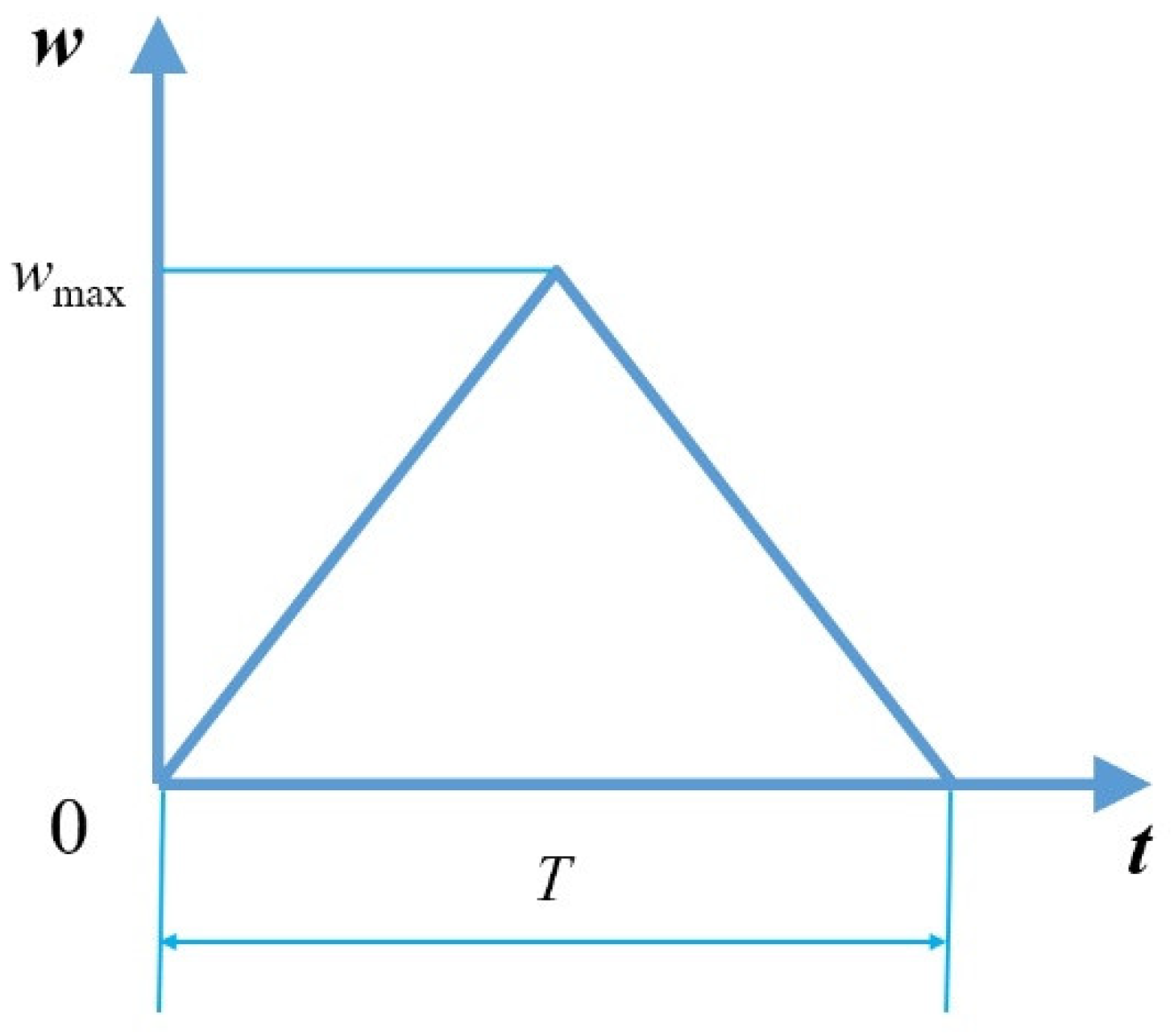


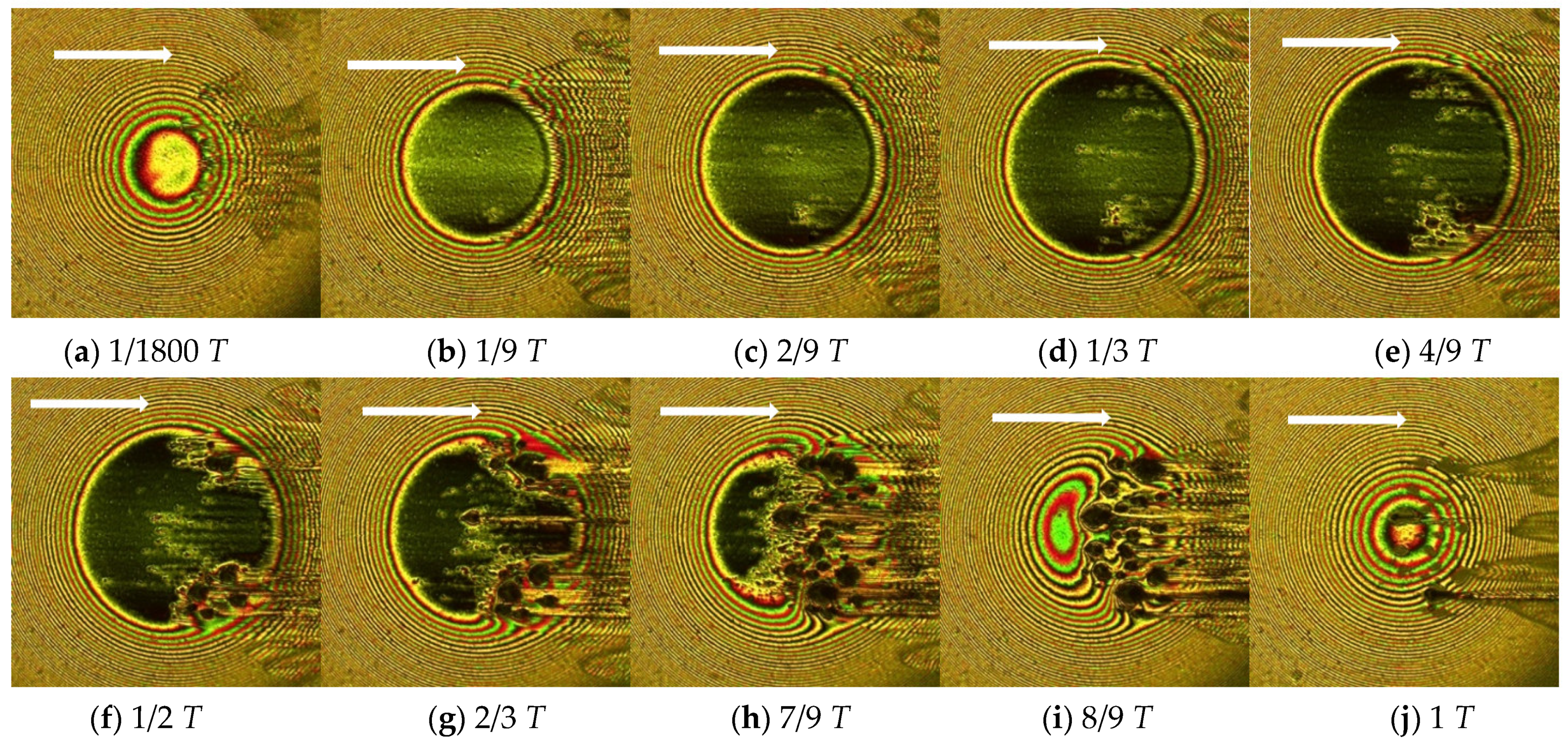






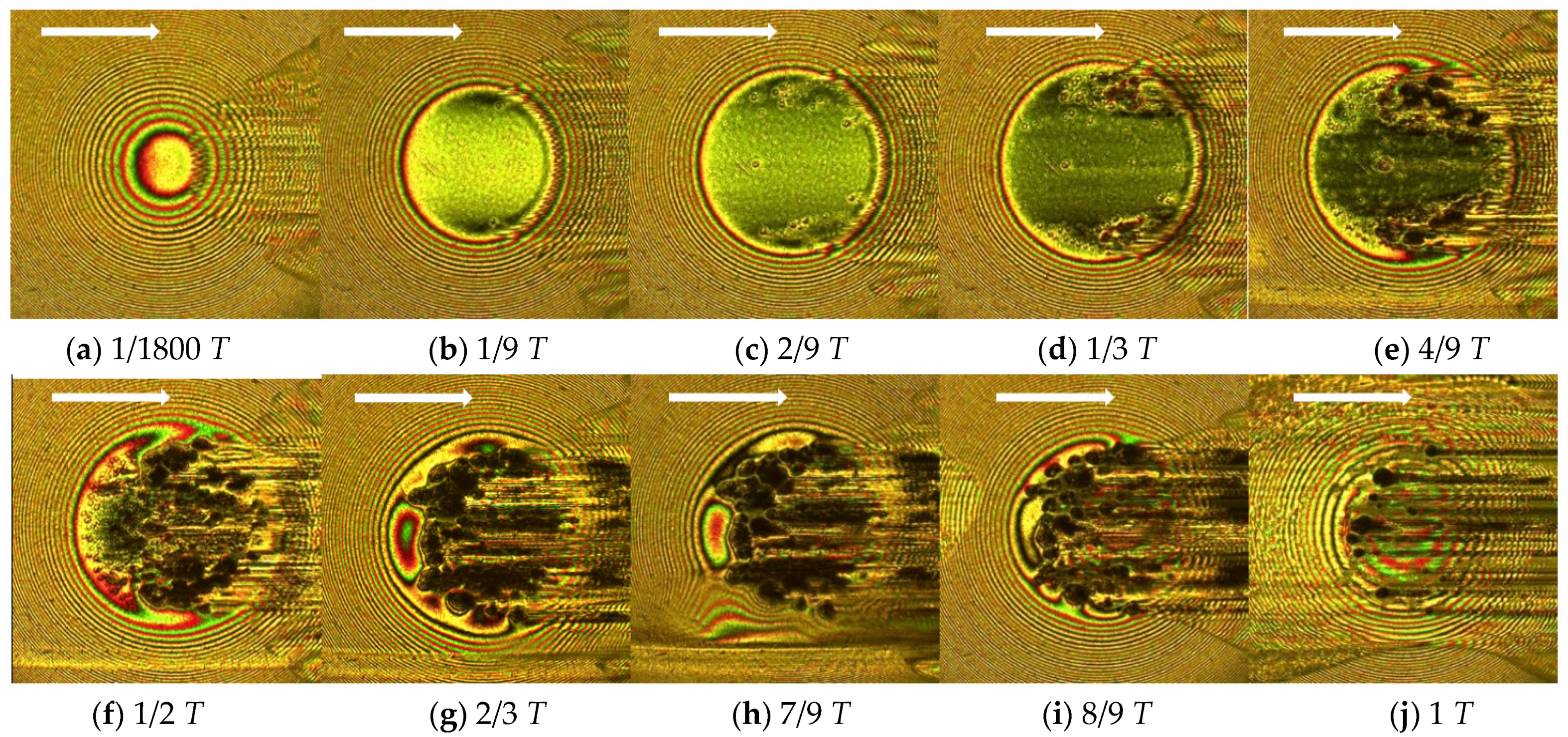

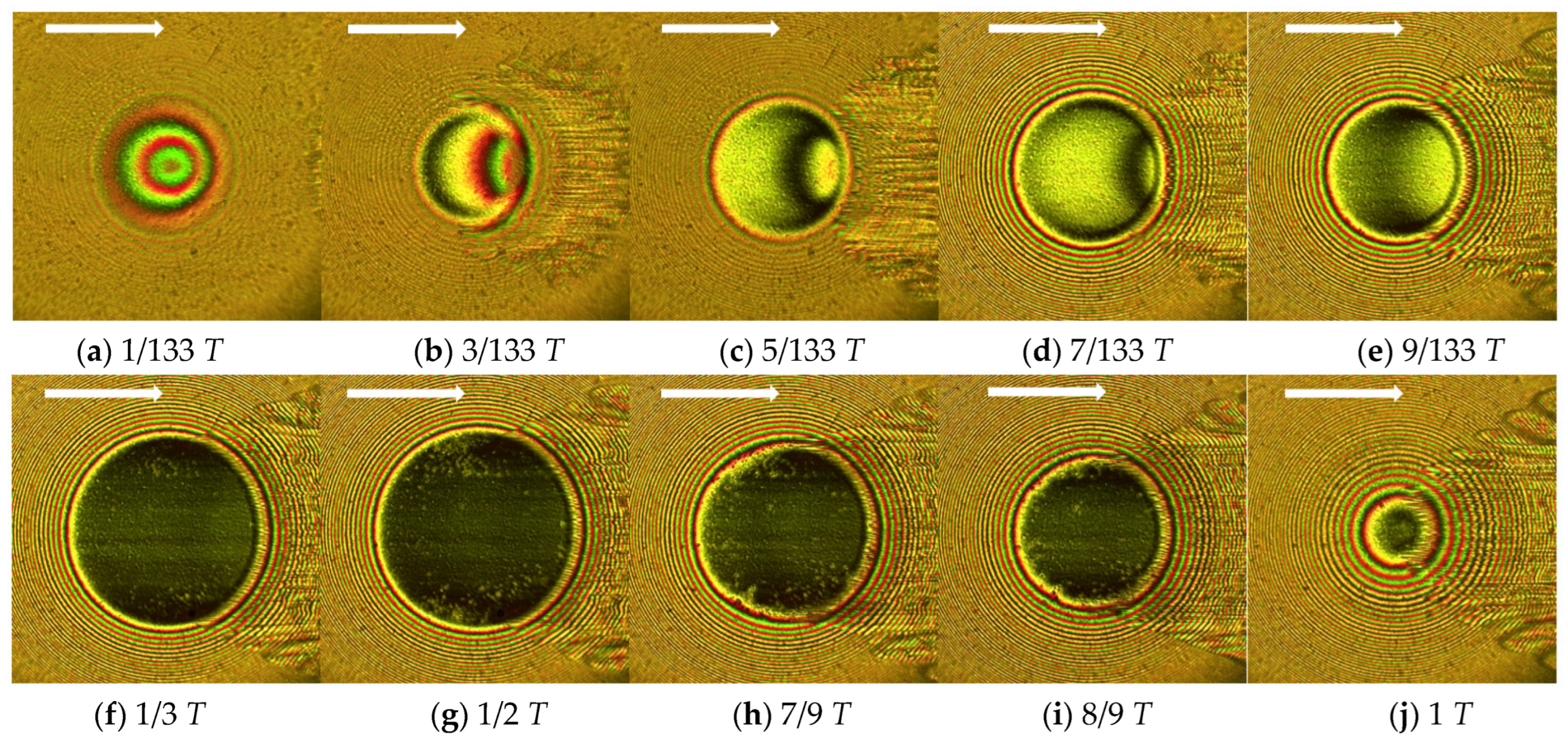



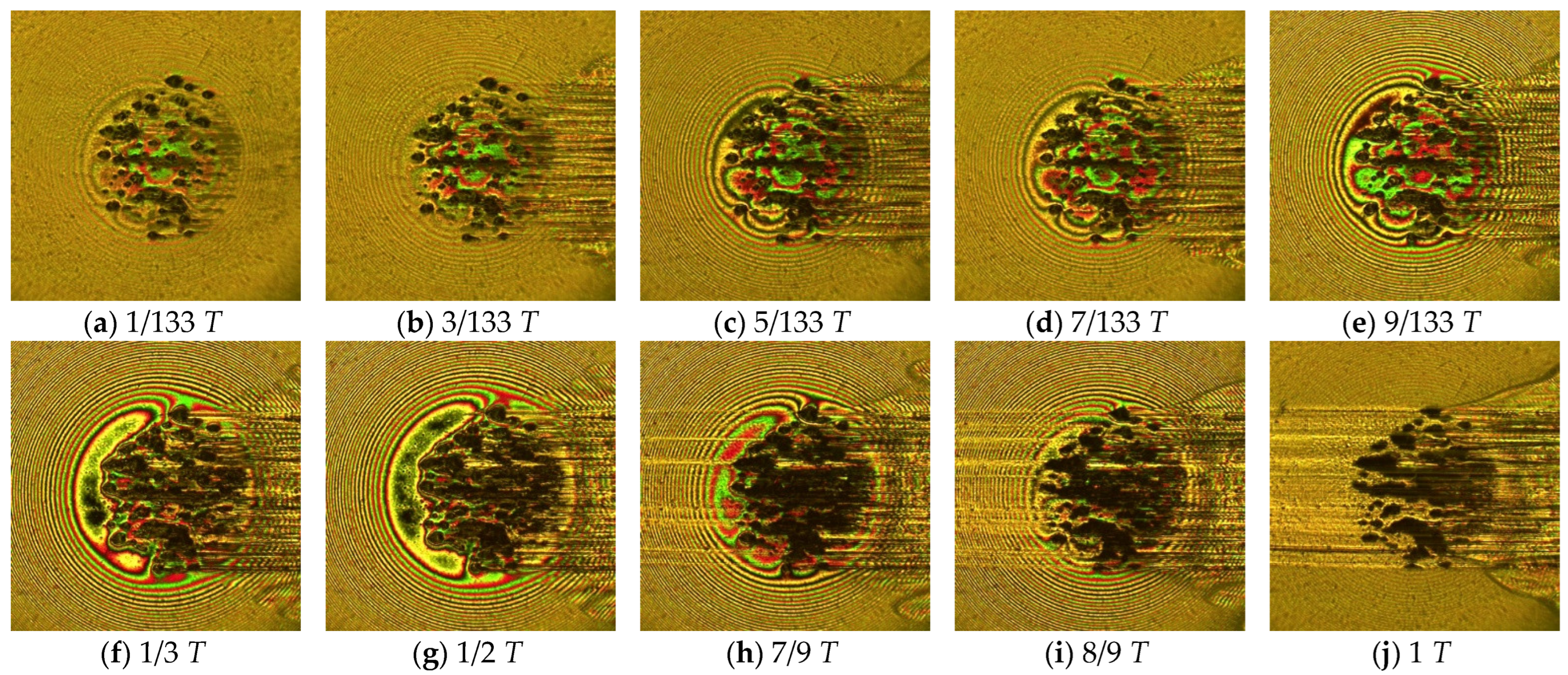




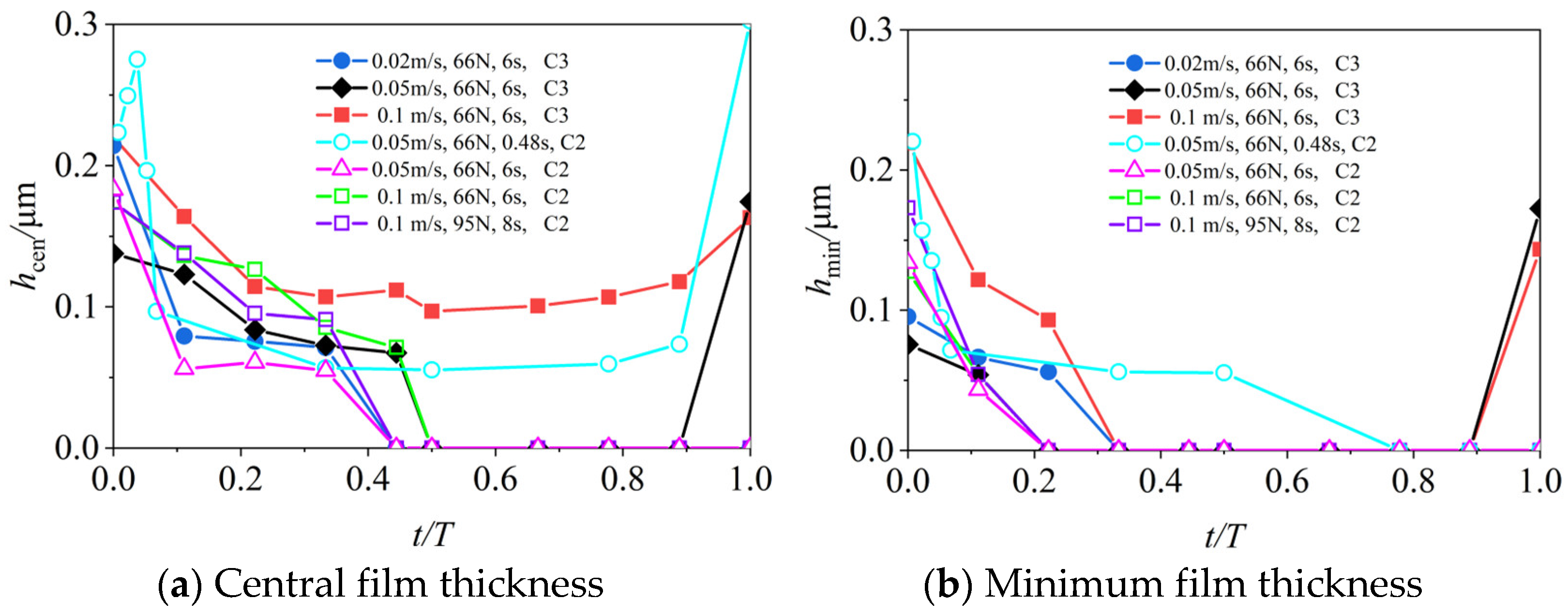
| Glass Disk | Steel Ball | |
|---|---|---|
| Material | K9 glass | GCr15 steel |
| Diameter (mm) | 150 | 25.4 |
| Thickness (mm) | 15 | |
| Elastic modulus (GPa) | 81 | 208 |
| Poisson ratio | 0.208 | 0.3 |
| Properties | Centoplex 3 | Centoplex 2EP |
|---|---|---|
| Base oil | Mineral oil | Mineral oil |
| Thickener | Lithium soap | Lithium soap |
| Applicable temperature range (°C) | −16 to 150 | −20 to 130 |
| Base oil viscosity (40 °C mm2/s) | 100 | 180 |
| Base oil viscosity (100 °C mm2/s) | 10 | 14 |
| Penetration (×0.1 mm) | 220 to 250 | 265 to 295 |
| NLGI | 3 | 2 |
| Experiment No. | Sliding Speed (vs/m⋅s−1) | Maximum Load (wmax/N) | Period (T/s) | Grease Type |
|---|---|---|---|---|
| 1 | 0.02 | 66 | 6 | Centoplex 3 |
| 2 | 0.05 | 66 | 6 | Centoplex 3 |
| 3 | 0.1 | 66 | 6 | Centoplex 3 |
| 4 | 0.05 | 66 | 6 | Centoplex 2EP |
| 5 | 0.1 | 66 | 6 | Centoplex 2EP |
| 6 | 0.05 | 66 | 0.48 | Centoplex 2EP |
| 7 | 0.1 | 95 | 8 | Centoplex 2EP |
Publisher’s Note: MDPI stays neutral with regard to jurisdictional claims in published maps and institutional affiliations. |
© 2022 by the authors. Licensee MDPI, Basel, Switzerland. This article is an open access article distributed under the terms and conditions of the Creative Commons Attribution (CC BY) license (https://creativecommons.org/licenses/by/4.0/).
Share and Cite
Lv, Z.; Han, Y.; Zhang, R.; Wang, J. Occurrence of Grease Lubricated Impact-Sliding Composite Wear. Lubricants 2022, 10, 284. https://doi.org/10.3390/lubricants10110284
Lv Z, Han Y, Zhang R, Wang J. Occurrence of Grease Lubricated Impact-Sliding Composite Wear. Lubricants. 2022; 10(11):284. https://doi.org/10.3390/lubricants10110284
Chicago/Turabian StyleLv, Zhendong, Yiming Han, Rui Zhang, and Jing Wang. 2022. "Occurrence of Grease Lubricated Impact-Sliding Composite Wear" Lubricants 10, no. 11: 284. https://doi.org/10.3390/lubricants10110284
APA StyleLv, Z., Han, Y., Zhang, R., & Wang, J. (2022). Occurrence of Grease Lubricated Impact-Sliding Composite Wear. Lubricants, 10(11), 284. https://doi.org/10.3390/lubricants10110284




